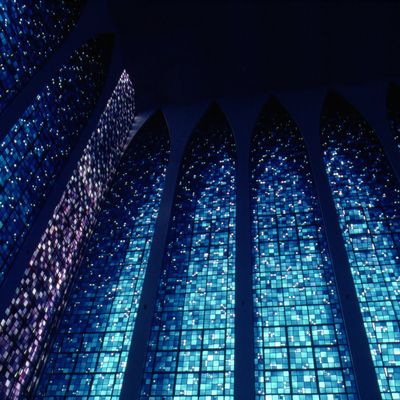
These days, blue light gets a bad rap: Exposure to the wavelength can disrupt the body’s production of melatonin, a hormone that causes sleepiness and regulates circadian rhythms — which, in turn, can lead to weight gain, increased cancer risk, and a whole mess of other health issues. (This is why scientists advise avoiding your phone and other screens, which have higher concentrations of blue light, around bedtime.)
But like so many other treatments that have now been thoroughly debunked — bedbugs, leeches, opium tonics — blue light was once heralded as a medical marvel, capable of curing just about anything. As Mental Floss highlighted earlier this week, the idea started with a 19th-century man named Augustus J. Pleasanton, who became convinced that using blue glass for his greenhouses and animal enclosures was the best way to ensure healthy crops and livestock. In 1877, he published his argument in a book titled, in full: The Influence of the Blue Ray of the Sunlight and of the Blue Color of the Sky, in Developing Animal and Vegetable Life; in Arresting Disease and in Restoring Health in Acute and Chronic Disorders to Human and Domestic Animals.
If Pleasanton were writing today, we might call this a headline that overpromises. Back in the day, though, it was quite the hit. Soon after his book was published, Mental Floss wrote, “blue glass began appearing everywhere, not just for agricultural uses, but in people’s houses, in hospitals, in consumer products, and more. One company in Massachusetts was making 3000 square feet of blue glass every day in 1877.”
But the “blue-glass craze,” as it came to be known, was short-lived: Later the same year, the Boston Medical and Surgical Journal published an article debunking the idea of blue as a cure-all, with one exception: as a placebo for those who still insisted on believing in its powers. “Now that the public mind is occupied with the silly blue glass mania,” the journal declared, “[we] suggest to hypochondriacs, who are always on the alert for new remedies, to try the effect of blue pill before investing in blue glass.”
And modern research has one more exception: Blue spaces are also pretty soothing for the mind, if not a cure-all for the body. At any rate, an ocean view beats a stained-glass window almost every time.




